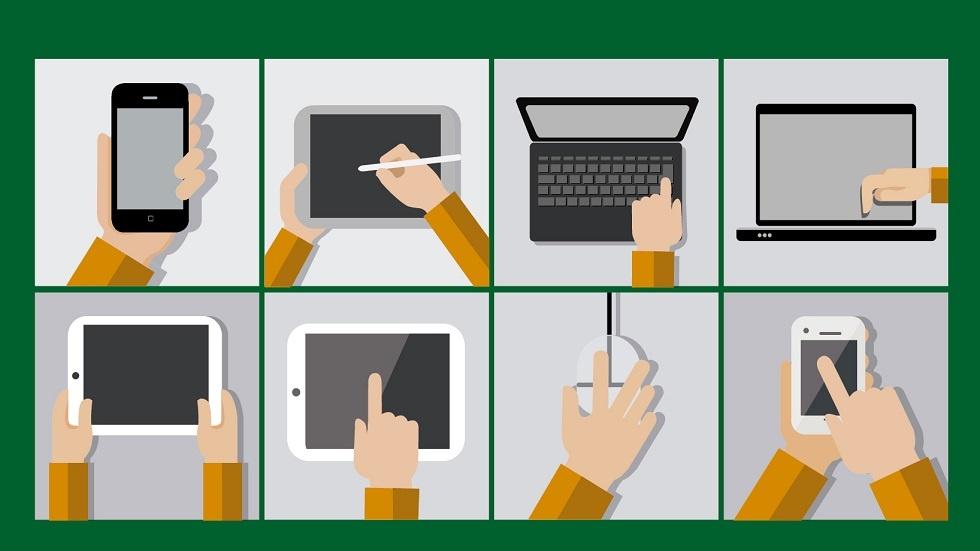“If we teach today’s students as we taught yesterday’s, we rob them of tomorrow.” These words by John Dewey are indeed poignant with meaning. The proliferation of mobile technology, laced with internet connectivity has brought about a tectonic shift in the education landscape.
The advent of myriad advanced mobile applications has led to edification riding the crest of the technology wave that has engulfed the world. It has the potential to shatter the shackles which nip the desire to learn in the bud. It is difficult to envisage life without mobile devices in today’s scenario which epitomizes the role they can play in imparting learning on the go. This can eliminate the constraints of paucity of time and resources which impedes inquisitive intent of learners to pursue higher education. It has been a matter of grave concern that potential students had to relinquish their pursuit of learning due to the obligation of fulfilling their family responsibilities. Thus, with the amalgamation of mobile technology and interactive education content, mobile learning has created ripples of exuberance in the field of education.
Mobile learning or m-learning has opened floodgates for conceptualization of education systems through the digital platform. It has provided a shot in the arm for the e-learning sector, as students can have easy access to learning content on their handheld devices as per their convenience. This also promotes self-paced learning and optimal utilization of leisure time by students, as mobile devices have become their constant companions. With disruptive innovation in the field of mobile technology, a gamut of applications catering to interactive learning has come into existence. These m-learning applications provide students with an enriching experience through modern ways like game-based learning. This helps in honing the concepts of the learners by retaining their interest and attention. Use of games as a mechanism goes a long way in breaking the monotony and fostering greater involvement of the students.
The idea of personalized learning has received a boost with advancement of learning analytics where software applications help to track the preference of individual learners and accordingly provide content in the favored format. This also enhances collaboration where students can interact with experts, tutors, and peers and have access to videos and blogs promoting social learning. With cloud technology taking giant strides, it proves to be a major enabler for m-learning as a humungous amount of data can be made available to the students at their finger tips. The validation of learning forms the crux of the education system. With mobile learning being embedded with software applications providing metrics of understanding and performance of knowledge of the learners has paved the way for greater accountability. Students can easily gauge their core competencies and concept understanding and devise strategies to streamline their learning methods to ensure better outcomes. This unbolts the potential of self-actuation where students have the liberty to plan and control their learning process. This paves the way for comprehensive development.
The phenomenon of m-learning has engulfed the world with India being no exception. India is a hotbed of potential students with soaring aspirations of pursuing higher education. M-learning is an ideal platform to unlock the true potential of India’s education system with its massive population base having a remarkable appetite for digital content. As per a report by IAMAI (Internet and Mobile Association of India) and KPMG, India is estimated to have 236 million mobile internet users by 2016 which is likely to reach 314 million by 2017. These statistics do not depict mere numbers, but the unprecedented opportunity India provides for m-learning to flourish in the near future. However the sheer population of India with its favorable demography leaves a lot to be desired in terms of mobile internet connectivity.
The biggest challenge for India in capitalizing on the m-learning trend is providing easy access to internet even in the remotest regions. Here, the role of the governments and telecom companies is of paramount importance as their working in collaboration can usher in an era of digitalization. Installing Wi-Fi hotspots and providing subsidized tariff rates for mobile internet users can go a long way in augmenting the student base for m-learning. ITM University Online, one of the prominent educational institutions, having a strong foothold in the e-learning sector is also working towards delivering its courses on handheld devices. With a large number of universities and institutes embracing the m-learning platform with open arms, the future education scenario is on the verge of a path-breaking transformation. This can usher in an education eco-system wherein the idea of “Learning on the Go” shall indeed form its basic fabric. Mobile devices with connectivity and the choice of new apps specific to education puts access to education in the hands of learners making learning on the go a reality. I think Learning on the go will witness a new turn around in 2016.
